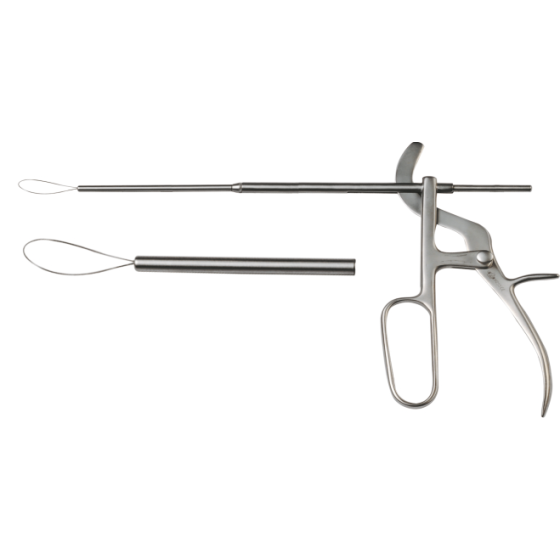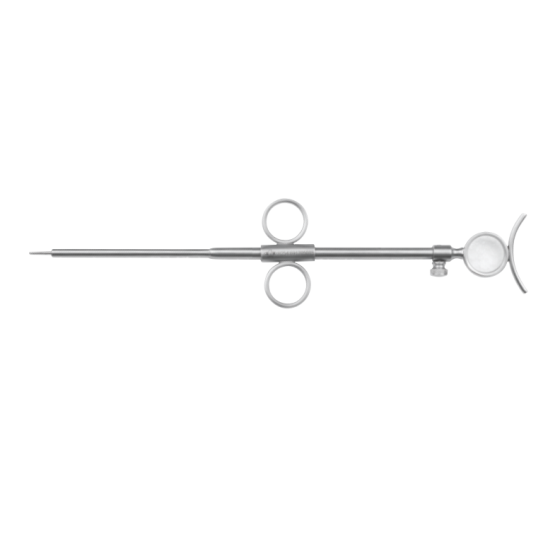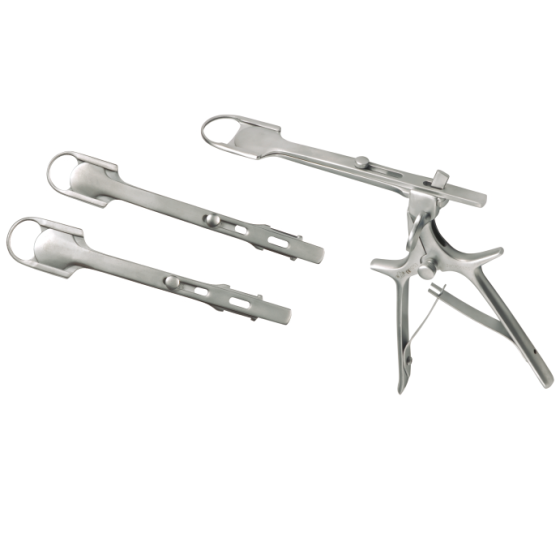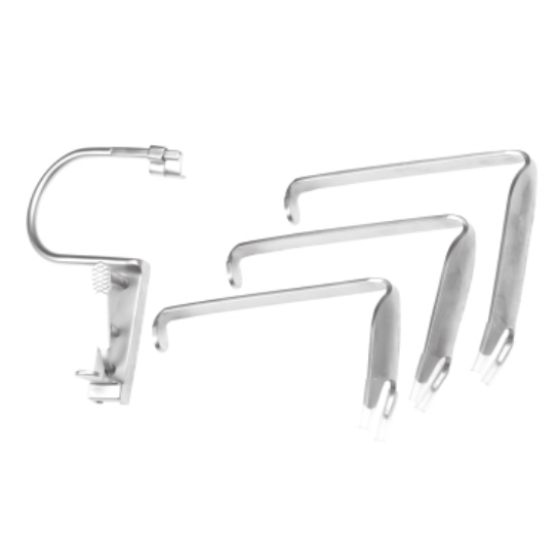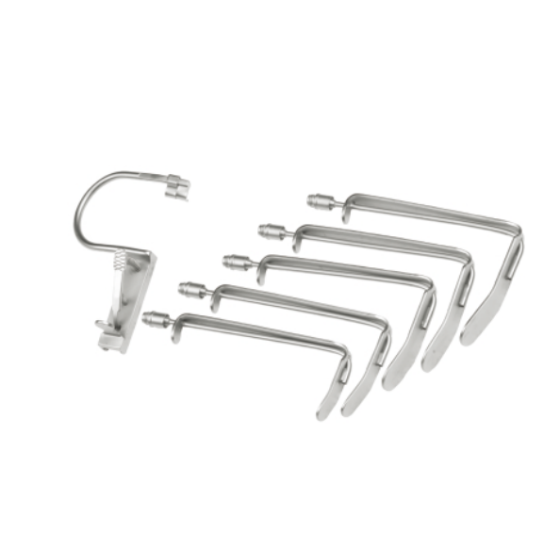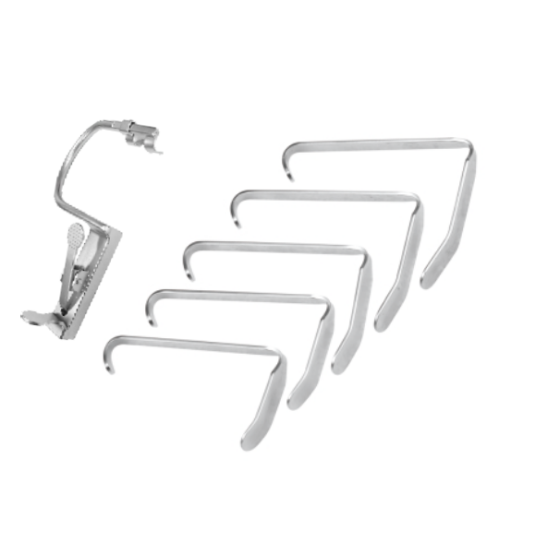An ACL (Anterior Cruciate Ligament)/PCL (Posterior Cruciate Ligament) instrument set is used in orthopedic surgeries related to knee ligament repairs. Here are the details:
1. Graft Preparation Instruments
Tissue Harvesters: These are used to obtain the graft material. For example, when using autograft (tissue from the patient's own body), a patellar tendon harvester might be included. It helps in carefully detaching the tendon while minimizing damage to surrounding tissues.
Sizers: To measure the diameter and length of the graft precisely. This is crucial as the graft needs to fit properly in the space left by the damaged ligament. For example, a sizer with a graduated scale can provide accurate measurements to ensure a good fit.
2. Ligament Reconstruction Instruments
Drills and Bits: Specialized drills are used to create tunnels in the femur and tibia bones through which the graft will be passed. The drill bits are usually of appropriate size and length to match the surgical requirements. For instance, a cannulated drill bit allows for the passage of a guide wire during the tunnel creation process.
Guidewires: These thin, flexible wires are inserted first to guide the direction of the tunnel drilling. They help in achieving accurate placement of the tunnels to ensure proper alignment of the reconstructed ligament.
Tensioning Devices: Once the graft is in place, tensioning devices are used to apply the correct amount of tension. This mimics the natural tension of the ACL or PCL and is vital for the proper function of the knee joint after surgery.
3. Visualization and Retraction Instruments
Arthroscopes: These are key instruments in minimally invasive ACL/PCL surgeries. The arthroscope is a small, lighted tube with a camera that allows the surgeon to visualize the inside of the knee joint. It provides a clear view of the ligament damage and the surgical field during the procedure.
Retractors: They are used to hold back soft tissues such as muscles and fat pads to provide better access and visibility to the
The following is the general usage method of the instruments in the ACL/PCL surgical instrument set:
Arthroscopic Instruments
Arthroscope
Preparatory work: Before the start of the operation, the arthroscope needs to be inspected to ensure that its light source and lens are clear. Connect the arthroscope to the camera system and the light source system, and adjust the focal length and brightness so that it can provide a clear view inside the joint.
Usage process: Insert the arthroscope into the knee joint through an appropriate incision. During the insertion process, the movements should be gentle to avoid damaging the articular cartilage and other tissues. During the operation, the assistant is responsible for stabilizing the position of the arthroscope and adjusting the angle of the arthroscope according to the surgical needs so that the surgeon can observe the location and degree of damage to the ACL or PCL, as well as the condition of the surrounding tissues.
Irrigation Device
Connection and Setup: Connect the pipeline of the irrigation device to the irrigation channel of the arthroscope. Usually, normal saline is used as the irrigation fluid, and the appropriate irrigation pressure and flow rate are set. Generally, the irrigation pressure is maintained within an appropriate range to ensure a clear view inside the joint cavity and at the same time not cause excessive pressure on the tissues inside the joint.
Usage Method: During the operation, continuously infuse normal saline. On the one hand, it can flush out blood and debris in the joint cavity to maintain a clear view; on the other hand, it can provide a certain cooling effect for the arthroscope to prevent the lens from overheating due to long-term use.
Ligament Reconstruction Instruments
Drilling Instruments (such as Drill Bits and Guide Pins)
Positioning: After determining the positions of the bone tunnels for ACL or PCL reconstruction, first use the guide pins for positioning. The insertion direction and depth of the guide pins need to be determined






